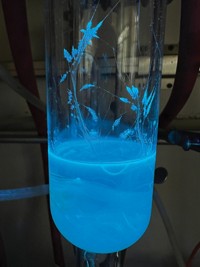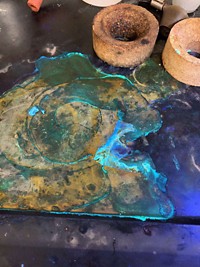Advertisement
Grab your lab coat. Let's get started
Welcome!
Welcome!
Create an account below to get 6 C&EN articles per month, receive newsletters and more - all free.
It seems this is your first time logging in online. Please enter the following information to continue.
As an ACS member you automatically get access to this site. All we need is few more details to create your reading experience.
Not you? Sign in with a different account.
Not you? Sign in with a different account.
ERROR 1
ERROR 1
ERROR 2
ERROR 2
ERROR 2
ERROR 2
ERROR 2
Password and Confirm password must match.
If you have an ACS member number, please enter it here so we can link this account to your membership. (optional)
ERROR 2
ACS values your privacy. By submitting your information, you are gaining access to C&EN and subscribing to our weekly newsletter. We use the information you provide to make your reading experience better, and we will never sell your data to third party members.
Synthesis
Chemistry In Pictures
Chemistry in Pictures: Column colors
by Craig Bettenhausen
January 18, 2024

Chromatography is a critical tool in chemical synthesis; it’s often the only practical way to separate what you want from a reaction mixture from what you don’t. Kathryn Wolfe’s synthetic workup wasn’t all that colorful till she illuminated her column with a UV flashlight. Wolfe is a PhD student at the University of Calgary. “I knew that my compound was the yellow spot, and a byproduct was the red spot,” an unknown impurity, she says. “The blue, I figure, is PPh3 O, another byproduct of the reaction.” Wolfe ran the separation to purify tetrakis(butyl) 1H-phenanthro[1,10,9,8-cdefg]carbazole-3,4,9,10-tetracarboxylate, PTEN-H for short. She’s investigating that mouthful of a molecule as hole transport material in organic field effect transistors that could eventually be a part of printable electronic devices (Flex. Print. Electron. 2022, DOI: 10.1088/2058-8585/aca166) .
Submitted by Kathryn Wolfe
Do science. Take pictures. Win money. Enter our photo contest here.





Join the conversation
Contact the reporter
Submit a Letter to the Editor for publication
Engage with us on Twitter